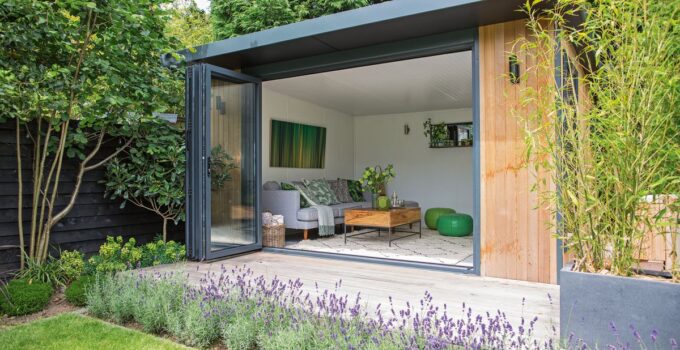In the modern age, homeowners have become increasingly captivated by the idea of transforming their yards into sanctuary spaces that merge the boundary between indoors and out. A garden room emerges as the perfect solution to achieve this blend of indoor comfort with outdoor freshness. But what exactly is a garden room, and how can one incorporate it effectively? This article delves into the details of this fascinating addition and offers insights into designing a garden room that meets both aesthetics and utility.
Defining a Garden Room
A garden room is typically a separate structure or a designated area within a garden that provides a sheltered space to enjoy the outdoors. Unlike a conservatory or a sunroom attached to the house, these rooms are often standalone units nestled amidst greenery. They offer an intimate connection with the garden, irrespective of the weather, making them ideal spots for relaxation, work, or even entertainment. SdPh Garden Rooms can help you create your dream garden room!
The beauty of a garden room is in its flexibility. It can be a simple pergola draped with flowering vines, a wooden cabin with large windows overlooking a pond, or a modern glass structure that allows a panoramic view of the garden.
Material Choices Matter
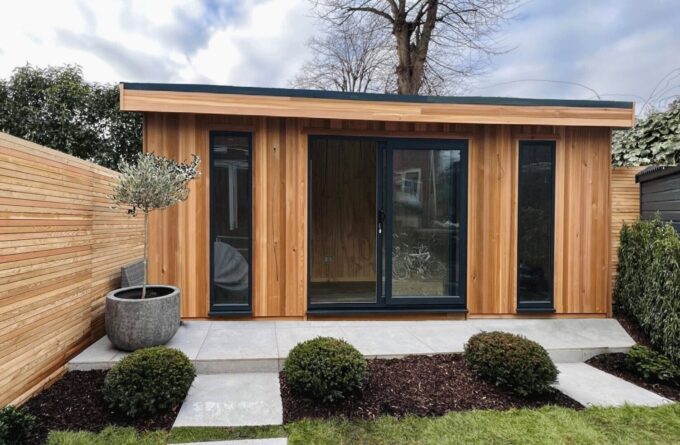
Source: warwickbuildings.co.uk
When it comes to garden rooms, the choice of material can significantly influence the overall ambiance. Popular materials include:
- Wood: This material is versatile and imparts a natural look. Whether it’s a rustic log cabin feel or a sophisticated wooden pavilion, wood can be adapted to various styles.
- Metal: Modern garden rooms often employ metals for a sleek finish. Aluminum or steel frames combined with glass can offer durability and a contemporary flair.
- Glass: To make the most of outdoor views, extensive use of glass is common. It ensures that the garden remains the focal point, providing an immersive experience.
- Stone or Brick: For those desiring a more solid, grounded feel, stone or brickwork can offer both texture and substance.
The choice of material should be in harmony with the garden’s theme and the main residence. It’s essential to consider factors like maintenance, local climate, and longevity when selecting materials.
Incorporating Nature
While a garden room is an architectural element, it should seamlessly blend with the natural surroundings. The real essence of such rooms lies in its ability to incorporate nature, making it feel like an organic extension of the garden.
Planting around this special room is pivotal. Choose plants that not only complement the structure but also create a cohesive look. Consider the play of light and shadow and select plants that can provide interesting silhouettes or colorful displays throughout the seasons.
Water elements, like a pond or a fountain nearby, can amplify the tranquility of the space. The sound of flowing water adds another sensory layer, enhancing the overall calming experience.
Read more about the sound of flowing water and learn why should you listen to it more often.
Functional Considerations
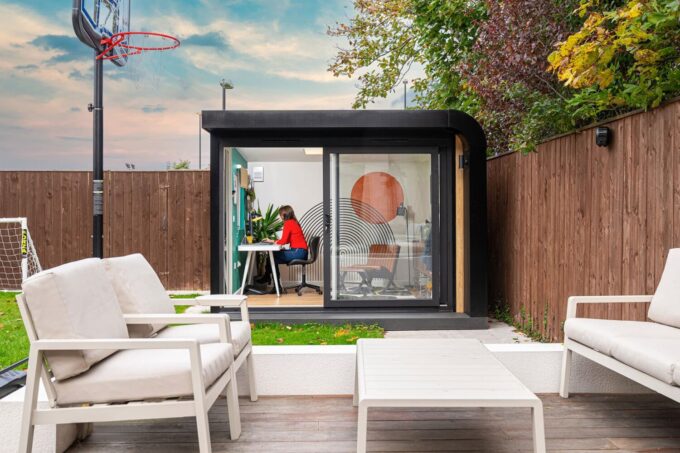
Source: greenretreats.co.uk
Beyond aesthetics, a garden room should serve a functional purpose. Depending on individual preferences, it could serve as:
- A Home Office: With the rising trend of remote work, a garden room can be the perfect home office. Away from the main house’s hustle and bustle, it provides a serene environment to concentrate.
- A Hobby Room: Whether it’s for painting, reading, or practicing a musical instrument, the space can be tailored to specific hobbies.
- Entertainment Space: Equipped with comfortable seating and possibly even an outdoor kitchen, it can be an ideal spot for gatherings.
- Relaxation Nook: Sometimes, all you need is a quiet place to unwind. A garden room equipped with plush seating, soft lighting, and perhaps even a hammock can serve as a personal retreat.
When planning the room’s functionality, it’s crucial to consider factors like insulation, electricity, and internet connectivity, especially if it’s intended for year-round use.
Designing with the Seasons in Mind
A garden’s appearance changes with the seasons, and so should the experience of this room. Designing with a seasonal perspective ensures that the garden room remains a delight all year round.
In warmer months, large doors or windows can be opened up to let in the fresh air, while during colder times, they can remain closed to offer a cozy shelter, watching the rain or snowfall. Incorporating features like heating, ceiling fans, or even a fireplace can adjust the comfort level according to seasonal needs.
Incorporating Personal Touches
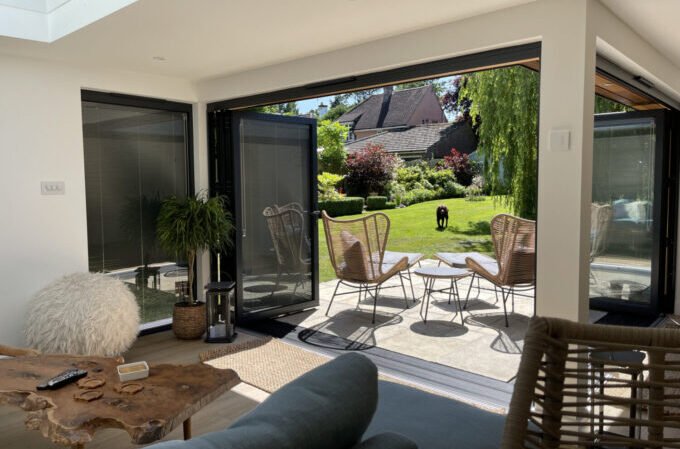
Source: vividgreen.co.uk
Every garden room has the potential to be a reflection of its owner’s personality and style. It’s not just about the structure but the myriad of ways one can personalize it.
Furniture Selection: Depending on the purpose of your room, the furniture can vary.
However, always choose pieces that resonate with your style and the room’s overall theme. For a rustic feel, opt for wicker or wooden furniture. For a more modern look, sleek metal or minimalist pieces would work best.
Art and Accessories: While the garden outside will undoubtedly be the primary focus, don’t shy away from bringing in art pieces that accentuate the beauty of the space. Wind chimes, sculptures, or even wall art can add layers to the room’s ambiance.
Lighting: The play of light can make or break the ambiance. Opt for soft lighting for relaxation spaces. If it’s a workspace, ensure that there’s ample light. Solar-powered garden lights or fairy lights can create a magical atmosphere as dusk sets in.
Textiles: Introduce soft furnishings to heighten the comfort. Cushions, throws, and rugs can transform the feel of the space instantly. They can also be changed seasonally, offering a fresh look with minimal effort.
Enhancing Accessibility
To truly integrate the garden room into your daily life, ensure it’s easily accessible. While the idea is to have a secluded spot, it shouldn’t feel like a chore to reach.
Pathways: Create clear paths from your main house to the garden room. Depending on the garden’s style, this could be a simple gravel path, stepping stones, or even a wooden walkway.
Weatherproofing: If you reside in an area with frequent rainfall, consider installing a covered pathway or ensuring that the room’s entrance is shielded.
Environmental Considerations
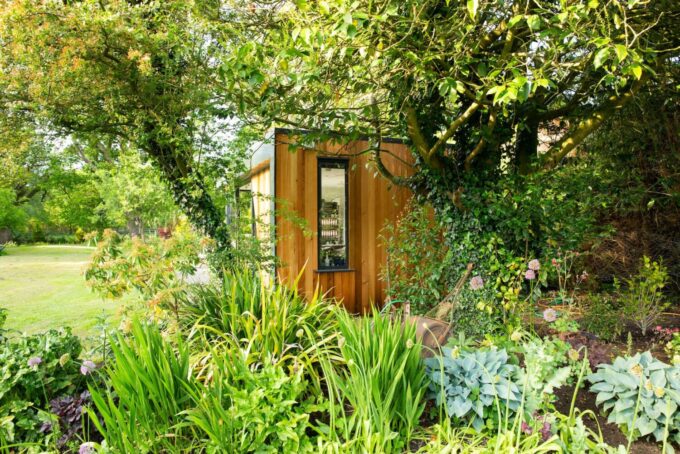
Source: housebeautiful.com
As we strive for eco-friendly solutions in our living spaces, garden rooms should be no exception.
Insulation: Proper insulation ensures energy efficiency. Especially if you plan to use the room year-round, invest in good insulation to maintain a comfortable temperature.
Sustainable Materials: Where possible, source sustainable or recycled materials for the construction and decoration of your garden room.
Green Roof: This is not only an aesthetic choice but also an environmentally friendly one. A green roof provides natural insulation, encourages biodiversity, and seamlessly merges the structure with its surroundings.
Rainwater Harvesting: Install systems to harvest and store rainwater. This can be used to water the garden or even for the room’s utilities if appropriately filtered.
Future-Proofing Your Garden Room
The needs and purposes of spaces can change over time. Design your garden room in a way that it can adapt to future requirements.
Modular Design: Consider a modular design, which allows easy alterations or expansions in the future.
Tech Integrations: As technology becomes increasingly entwined with our lives, ensure your garden room has provisions for tech integrations that you might need in the future – be it advanced security systems, smart lighting, or other home automation systems.
Final Words
A garden room stands as a testament to the evolving relationship between humans and their natural surroundings. It’s not just a structure but a sentiment, reflecting a deep-seated desire to connect, contemplate, and cherish the beauty of the outdoors while enjoying the comfort of the indoors.
By considering both the aesthetic and functional aspects, homeowners can create a garden room that not only elevates the value and appeal of their property but also enhances their quality of life. In a world where moments of tranquility are becoming rare, a garden room offers a personal sanctuary, a space to pause, breathe, and reconnect with nature.

